

New aqueous cleaning system for acrylic paint films on paper supports has been developed. Isotonic aqueous cleaning solutions that match the pH and conductivity readings of acrylic paint films and paper supports obtained from agarose gel pellets have been shown to be effective in reducing or removing dirt, dust, active mold growth and associated stains, tide line stains, and discoloration.
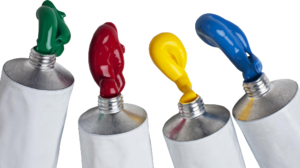

Acrylic paint is fast-drying paint made of pigment suspended in acrylic polymer emulsion. The composition varies from brand to brand, and even from pigment to pigment. The typical ingredients of wet acrylic emulsions are water (around 65% volume), acrylic polymer, pigments, surfactants, dispersants, biocides, thickeners, and inorganic components, as well as other materials added by artists. Acrylic paints are water-soluble, but become water-resistant when dry. After aging and during cleaning, the colors of various acrylic paint films react differently.
Acrylic works of art on paper are sensitive to aqueous cleaning methods. The two primary risks are paint film swelling and surfactant or pigment disruption. New aqueous cleaning system that use LAQUAtwin pH and conductivity pocket meters to mitigate the above-mentioned risks was demonstrated at the 2011 Cleaning of Acrylic Painted Surfaces (CAPS) workshop. The LAQUAtwin pH and conductivity meters were used to test acrylic paint surfaces and to formulate customized aqueous cleaning solutions.
In CAPS aqueous cleaning system, pellets of agarose gel are prepared and applied to evaluate the surface pH and conductivity of acrylic paint films and paper supports. The readings are then used to formulate isotonic aqueous cleaning solutions, which are adjusted to the approximate pH and conductivity of the acrylic paint films and paper supports.
The LAQUAtwin pH and conductivity meters have flat sensors that analyse micro volume samples in just few seconds. These waterproof pocket meters are programmed with automatic buffer recognition function for automatic calibration and automatic temperature compensation (ATC) function for accurate measurement. Both meters come in three different models and each is packed with two standard solutions for calibration.
A. Preparation of 2% (w/v) Agarose Pellets
Ingredients:
For tide line stains on paper supports, increase the weight of agarose to make a 4% or 5% (w/v) gel and use pre-mixed pH- and conductivity-adjusted water solutions, instead of DI water. Highly concentrated gel delivers moisture at a significantly reduced rate, consequently mitigating or eliminating the formation of tide lines around the test area. By increasing ionic activity at the stain site via appropriate water adjustment, paper swelling is limited and absorbency controlled.
B. Sampling of Acrylic Paint Films or Paper Supports
At room temperature, apply individual agarose pellets to acrylic paint films or paper supports (See Figure 1).
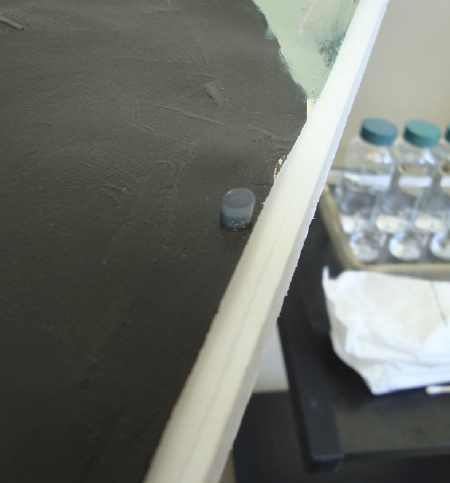
Figure 1: An agarose pellet resting on the surface of an acrylic paint film.
For sampling paint films, select colors that represent 80% of the pure colors and color mixtures. Allow the pellets to rest on the surface for 45 to 60 seconds. For sampling paper supports with tide line stains, apply 3 pellets with different conductivities and leave for 2-10 minutes.

Figure 2: Paula Rego, In the Garden, 1986, acrylic on paper lined to canvas.
C. Calibration of Meters
Calibrate the LAQUAtwin pH and conductivity meters according to manufacturer’s instructions using their respective standard solutions included in kits.
D. Conductivity Analysis of Agarose Pellets
Place the 3-mm agarose pellet onto the well of the conductivity sensor using blunt tweezers. The pellet must be carefully pushed to the back of the meter to allow direct contact with the two titanium/platinum black metals. The tweezers must not touch the metals to avoid damaging them. Record the conductivity reading once it is stable. Rinse the sensor with DI water before testing another pellet.
E. pH Analysis of Agarose Pellets
After conductivity analysis, place the same 3-mm agarose pellet onto the pH sensor using blunt tweezers. Moisten the pellet with a drop or two of DI water to release the soluble components into the flat glass sensor. Make sure that the whole flat glass sensor is covered with mixture of agarose gel and DI water. Record the stable pH reading after 1 minute equilibration time. Rinse the sensor with DI water before testing another pellet.
F. Formulation of Aqueous Cleaning Solutions
Prepare aqueous cleaning solutions that match the pH and conductivity of the readings taken from acrylic paint films or paper supports by following the procedure below. Each solution should be within a few tenths of the pH reading, and within approximately 500 µS of the conductivity reading.
Tables 1 and 2 show the ingredients for pH-adjusted waters at 1000µS/cm and 6000µS/cm, respectively. If solutions in these tables will be prepared, follow the indicated volumes of acetic acid, DI water, and ammonium hydroxide for steps 1 and 2.
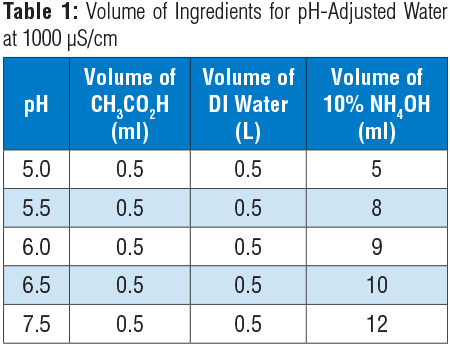
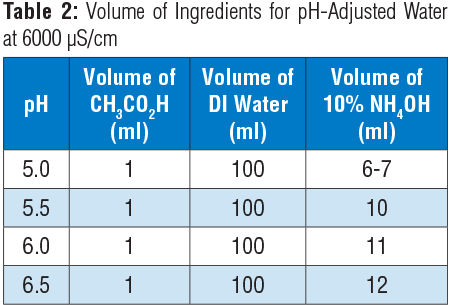
Ingredients:
To preserve the aqueous cleaning solutions, add a drop of Germaben II in each batch and store in sanitized, airtight containers inside a refrigerator. Discard the solutions when mold growth appears.
To clean a paint film, lightly moisten a hand-rolled cotton swab with aqueous cleaning solution and apply 3-4 passes. Less than 3 passes is required for paper support to prevent swelling of surface.
Refer to Technical Tip nos. 1 and 3 for detailed information on conditioning, cleaning, and storing the pH and conductivity sensors. The technical tips can be viewed and downloaded from the support section of our website www.horiba-laqua.com.
During sampling, the agarose pellets absorb the soluble components on the surface of paint films or paper supports by diffusion and capillary action. This causes the pH and conductivity of agarose pellets to shift closer to that of the paint films or paper supports. Although it is faster to perform the sampling with droplets of DI water, this method often results in aggressive localized swelling at the test site. The agarose pellets may be slower-acting, but they hold moisture in check and prevent swelling.
Aqueous cleaning solutions are prepared by first adding acetic acid (a weak acid) to DI water, then ammonium hydroxide (a weak base). The latter reacts with the former to produce salt, which sets the conductivity. Further addition of ammonium hydroxide raises the alkalinity and therefore the pH value of the solution.
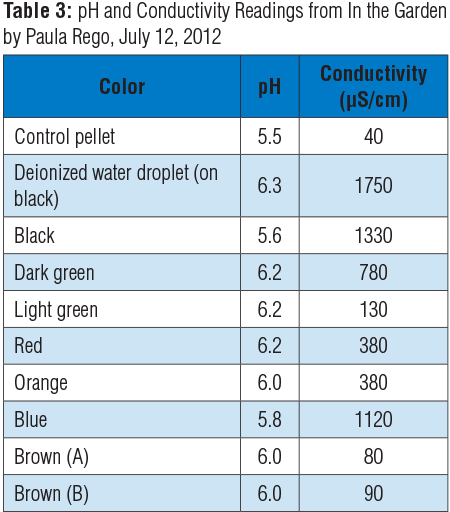
Using aqueous cleaning solutions whose conductivity and pH most closely matched that of the colors of acrylic paint films and surface of paper support on which they were applied resulted in the least pigment transfer and swelling while maximizing cleaning efficiency. The solutions harmonize with the paint films or paper supports achieving near chemical equilibrium at the surface.
Revision 1.0, 20 October 2016
Você tem alguma dúvida ou solicitação? Utilize este formulário para entrar em contato com nossos especialistas.
Pocket Water Quality Meters
Pocket Water Quality Meters
Pocket Water Quality Meters
Pocket Water Quality Meters
Pocket Water Quality Meters
Pocket Water Quality Meters